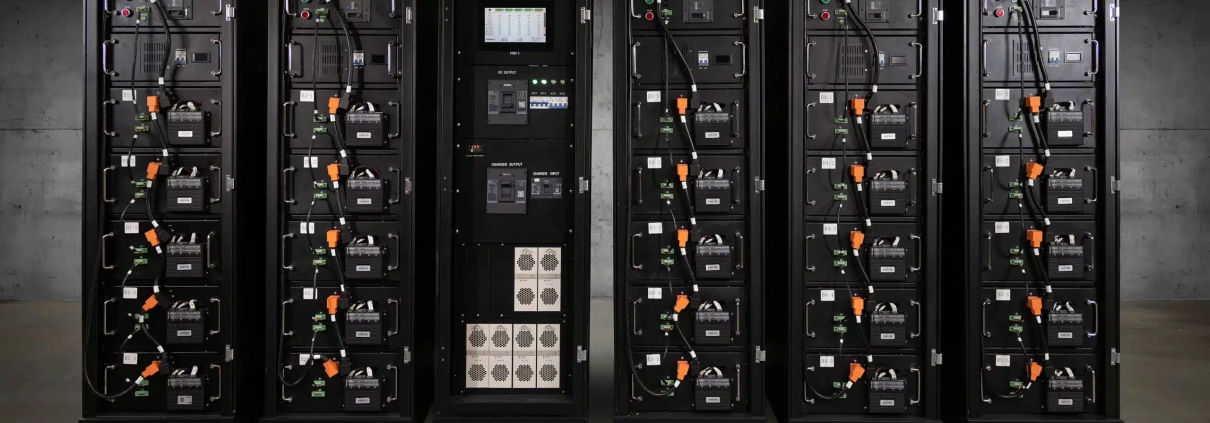Telecom Battery Solutions: How to Choose, Optimize, and Future-Proof Your Network Power
Telecom Battery Solutions: How to Choose, Optimize, and Future-Proof Your Network Power
Introduction: Why Telecom Relies on Reliable Battery Solutions
Telecom networks are the backbone of today’s connected world. From mobile base stations to edge data centers and remote communication sites, stable and reliable power is non-negotiable. While the grid remains the primary source of energy, backup batteries ensure uninterrupted service during power outages, load fluctuations, and in off-grid deployments.
With the rollout of 5G, rising energy demand, and the push for green, efficient infrastructure, battery solutions have become a critical decision point for operators. Choosing the right technology directly impacts uptime, operating costs, and long-term sustainability.
Key Dimensions for Selecting Telecom Batteries
Voltage Specifications
Most telecom applications use standardized voltages such as 12V, 24V, and 48V. Among them, 48V systems dominate in base stations and backbone network facilities due to compatibility with DC equipment and reduced line losses.
Battery Chemistry: Lead-Acid vs. Lithium
- Lead-Acid Batteries
- Lower upfront cost
- Proven, mature technology
- Heavier and bulkier footprint
- Shorter cycle life (typically 500–1500 cycles)
- More frequent maintenance
- Lithium Batteries
- Higher energy density (2–3 times lead-acid)
- Longer lifespan (3000–5000 cycles or more)
- Lighter and easier to deploy
- Faster charging (up to 80% capacity within 1–2 hours)
- Higher upfront investment, but lower total ownership cost
Balanced View: While lead-acid remains viable where budget is tight and replacement is manageable, lithium has become increasingly favored in telecom for efficiency and long-term savings.
Runtime Requirements
Typical telecom backup demands 2–8 hours of autonomy. The exact sizing depends on site criticality, available grid reliability, and whether renewable energy is integrated into the system.
The Role of Battery Management Systems (BMS)
Modern lithium battery solutions rely on a Battery Management System (BMS) to ensure safe and efficient operation.
- Protection and Balancing: Prevents overcharging, over-discharging, and overcurrent conditions.
- Voltage and Temperature Regulation: Keeps cells operating within safe ranges.
- System Coordination: Ensures multiple cells and modules work consistently together.
- Lifecycle Optimization: Extends battery service life by maintaining uniform performance across all cells.
By providing these functions, the BMS plays a silent but essential role in enabling stable power delivery for telecom operators.
Operations and Optimization
Reducing Maintenance Frequency
Lithium batteries require less frequent replacements and do not involve electrolyte checks or top-ups, which significantly reduces on-site visits.
Battery Consistency and Replacement Strategies
Operators often replace entire strings of batteries to avoid performance gaps. Lithium’s uniform aging profile helps extend replacement intervals and simplifies inventory management.
Environmental Adaptability
- High Temperature: Lithium performs better under elevated heat with lower degradation rates.
- Cold Conditions: Preheating or specialized designs allow lithium to function efficiently even below freezing.
- High Humidity/Remote Locations: Reduced maintenance needs make lithium especially suitable for inaccessible or harsh environments.
Investment and Cost Effectiveness: The TCO Perspective
CAPEX vs. OPEX
- Lead-Acid: Lower initial capital expenditure (CAPEX) but higher operational expenditure (OPEX) due to frequent replacements and maintenance.
- Lithium: Higher CAPEX but significantly lower OPEX thanks to longer service life and reduced site interventions.
Case Example
A regional telecom operator upgraded from lead-acid to lithium in its rural base stations. Despite higher upfront investment, the company reported a 35% reduction in total cost of ownership over five years, mainly due to reduced truck rolls and fewer battery replacements.
Typical Application Scenarios
- Remote or Off-Grid Sites
- Often paired with solar or wind energy.
- Lithium’s long life and low maintenance reduce the cost of servicing remote towers.
- Urban 5G Small Cells
- Space and weight are critical.
- Compact lithium batteries enable deployment in constrained environments.
- Edge Data Centers
- Require rapid switching and high power density.
- Lithium solutions deliver fast response times and consistent performance.
Industry Trends and Future Outlook
- Emerging Technologies: Solid-state batteries and supercapacitors show promise in extending performance even further.
- Recycling and Circular Economy: Telecom operators increasingly adopt lithium recycling programs to meet sustainability goals.
- Green Communication: Energy-efficient battery solutions directly contribute to reducing the telecom sector’s carbon footprint.
Conclusion and Practical Recommendations
Choosing the right battery solution is not about a one-size-fits-all approach. Operators must weigh voltage requirements, runtime expectations, site environment, and long-term cost.
- For cost-sensitive but less critical applications, lead-acid remains relevant.
- For high-performance, long-term telecom deployments, lithium offers clear operational and financial benefits.
- Looking forward, sustainable and intelligent battery solutions will define the next generation of telecom infrastructure.
Compare and Explore Three Practical 48V Lithium Solutions
To help you evaluate concrete options, here’s a quick overview of three 48V lithium batteries designed for telecom scenarios:
- 48V Communication Lithium Battery
- High energy density, long service life, and fast charging.
- Best suited for general telecom applications requiring robust and efficient backup.
- 48V GPS Communication Lithium Battery
- Features GPS positioning and live status functions.
- Ideal for remote or temporary sites where accessibility is limited and operational visibility is important.
- 48V Intelligent Lithium Battery
- Supports parallel expansion (up to 32 units), compatible with lead-acid systems, and optimizes discharge voltage.
- Recommended for operators planning phased upgrades or requiring high scalability.
Which One Fits Your Needs?
| Your Primary Need | Recommended Product | Why It Fits |
| A reliable, high-performance general solution | 48V Communication Lithium Battery | Balanced option for most telecom applications |
| Remote or hard-to-reach site deployments | 48V GPS Communication Lithium Battery | Location and status functions reduce maintenance complexity |
| Integration with existing lead-acid or scalable growth | 48V Intelligent Lithium Battery | Flexible, expandable, and upgrade-friendly |
👉 Click on the links above to explore detailed specifications and technical documentation, and find the battery that best matches your telecom infrastructure requirements.


